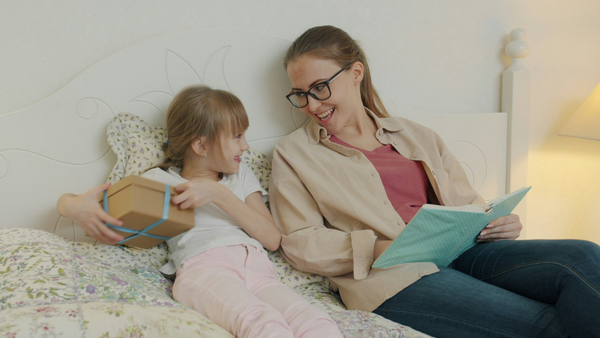By Isaiah Tien Grewal
Going to a restaurant is a relaxing experience for most people, but for my family, it's more like an expedition.
My mom researches a place online looking at photos and reviews. First, she tries to see if there is seating that would let me get in and out without disturbing others. My body can rock back and forth while eating good food, so I need space to express happiness and not bump anyone. Second, the service can't be too slow because my body will run out of regulation energy before I can finish the meal. And third, there must be cool enough air.
If all these items can't be guaranteed, mom looks for another place, or we just eat in. But, if a restaurant checks all those boxes, she calls to make a reservation for “a table away from others, if possible, please.” Then on the day, we bring my backpack with body engager activities and two portable neck fans. Imagine if my family could just decide on a whim to go out to eat!
This article describes how great restaurateurs can make their places welcoming to everyone, including Autistic diners. The most important factors are dining room temperature and an inclusive attitude. Other great considerations are varied seating, individual washrooms, and sensory helps.
Comfortable Room Temperature
Many autistics have malfunctioning sensory systems; we sense either too much or too little. It would be impossible for me to sit very long in a restaurant warmer than 70°F (21°C). If someone feels too cold at that temperature, they can just add layers to get comfortable, but it would be very difficult to get cool in a hot dining room.
Declare Autistics Welcome!
Guests might not know your restaurant is open for all, so make it obvious! Many autism families never go out to eat for fear of how others will react. Post a welcome proclamation on your website, outside your location, and on your walls. Widely affirming inclusivity signals to autism families, and everyone else, that autistics are safe to enjoy a meal under your roof.

Varied Seating
Try to offer different seating options. Some autistics like me prefer booths to feel surrounded and secure. Other autistics who feel a strong need to move favor chairs that give them room to fidget and flap. Bean bag chairs are great for assisting wigglers to sit for a whole meal. Also, try to give some sense of open space between tables to ease transitions in and out of the seating.
Individual Washroom
An individual washroom solves the problems of an adult autistic unable to safely navigate a public washroom alone. If an adult autistic is out with their parent or support person of a different gender, it can be embarrassing for the autistic, and shocking for others, to have them use the wrong washroom.
Sensory Help
Sensory helps such as fidgets, weighted blankets, earmuffs, and liquid motion toys can be calming assistance to help an autistic person stay for a whole restaurant visit. If someone is afraid of being publicly humiliated by a sensory overload outburst, they might not otherwise dare to enter your building, so be sure to broadcast any sensory supports you offer. Dream restaurants have sensory rooms, but sensory boxes are great too. Another option is to have sensory hours, when the atmosphere is more accommodating to those with sensitivities (lower lighting and music levels).
If you want to set up an autism-friendly restaurant but aren’t sure how, check this page out.

An Example of an Autism-Friendly Restaurant
We recently ate at a restaurant where we just walked in with zero advance worry or work. Mind blown.
At Sarang Kitchen, I ate squid stir-fried in a delicious house sauce served with a giant dried seaweed-covered rice bomb. I also had a Korean soda and ended my meal with a fun Korean ice cream sandwich. I was free to be myself, and it was so relaxing for my whole family.

Sarang Kitchen is the greatest autism-friendly restaurant I’ve ever visited. The owners are wonderful, as are their reasons for opening my new go-to eatery. Sitting in its temperature-perfect dining room, with easy access to individual washrooms, I felt no sense of anxiety. I had the dignity of independently going to the washroom without worry.
While Sarang’s talented Chef Deon Kim cooked my dish, I chilled in their sensory room and waited in my seat calmly occupied by their sensory box fidgets.
I can taste their scrumptious food now in my mind while I write these memories, and it's making me so hungry. Can’t wait till Friday when I get to eat there again.
Sarang Kitchen gets everything perfect. Give it a visit sometime and copy this flawless execution of a restaurant for everyone.

About the author:
Isaiah Tien Grewal is a Trainee in the LEND (Leadership Education in Neurodevelopmental Disabilities) Fellowship Program at Stony Brook University and a Neurodiversity and Disability Specialist at Bened Life. He works on research teams at the University of Calgary, the University of Virginia, the University of Toronto, and the Kennedy Krieger Institute (affiliated with Johns Hopkins Medicine). He holds an Undergraduate Certificate from Harvard Extension School and appears in the award-winning short film LISTEN, produced by Communication First. He contributed Chapter 39 of the book, “Leaders Around Me: Autobiographies of Autistics Who Type, Point, and Spell to Communicate,” and was featured in the University of Toronto Magazine and the News of the Stony Brook University School of Social Welfare.
Also by Isaiah Tien Grewal: Nonspeaking Autism - My Point of View
Watch the video about Isaiah's life-changing experience with PS128 here







